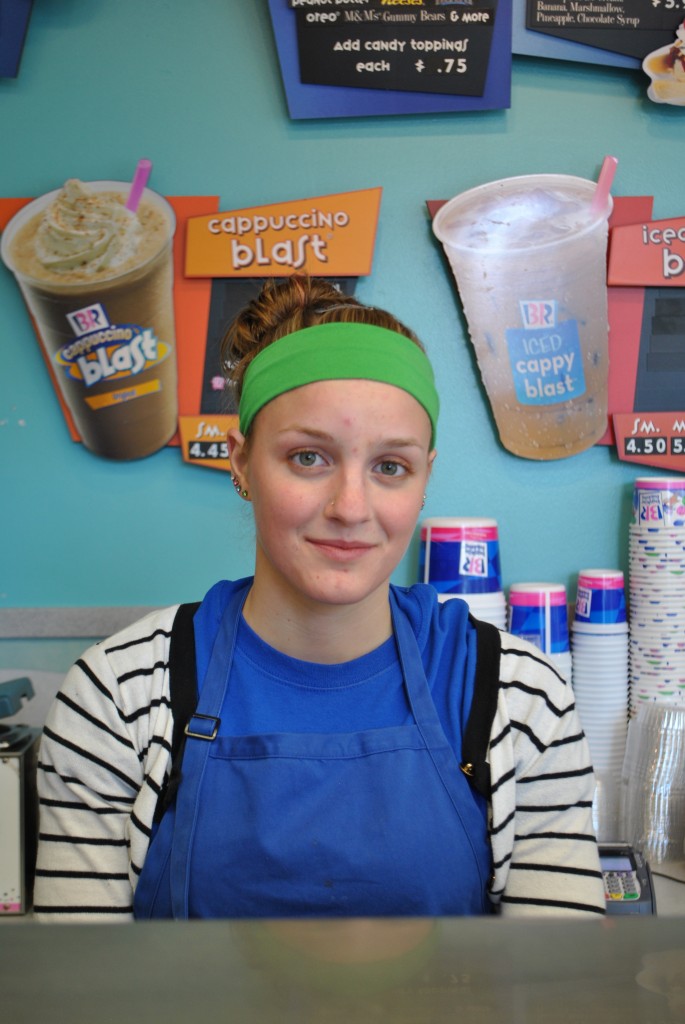Austin Shaff: Going abroad
 Austin Shaff crouched down and slid the brick into place as the summer sun in Zambia crested. Shaff, 17, traveled to the African nation with with his mother as part of a 10-day trip, that was sponsored by Habitat for Humanity International. The non-profit agency has helped build more than 500,000 affordable houses.
Austin Shaff crouched down and slid the brick into place as the summer sun in Zambia crested. Shaff, 17, traveled to the African nation with with his mother as part of a 10-day trip, that was sponsored by Habitat for Humanity International. The non-profit agency has helped build more than 500,000 affordable houses.
Shaff knew he wanted to do something like this after his mom, Carol Bernick, came back from a house-building trip to Honduras three years ago. So earlier this year, they searched online and found Chipulukusu, a village located near the city Ndola. They arrived in mid-June.
On the first day, Shaff and the other 12 volunteers got up at 6:30 a.m. and drove the 20-minute bus ride to Chipulukusu.
They split into two groups and each built a house. It was easy to communicate with the villagers, even though English wasn’t their first language. Everyone appreciated the efforts by the volunteers. The woman who received the house from Shaff’s group had been on the wait list for eight years.
“It’s opened my eyes to what’s going on in the world,” Shaff says now. “You hear about poverty and all those issues, but if you don’t see it you don’t think about it. The things we take for granted that they would love to have like easy access to water, electricity…It makes you think, ‘Oh my gosh, we have so much.’”
Part of the group visited a local school that had 400 students and only five teachers. The children sang to the visitors and volunteers donated items to the school.
The experience, overall, left Shaff wanting to help more, especially at Grant. “I might try to join the Octagon Club or one of those clubs that do a lot of volunteer work,” he says. “Or I might just try and do it on my own in the Grant community through Habitat and the Food Bank.”
Jack Roberts: Running state of mind
Photo by Mattie Jeidy
 n Spring 2009, Jack Roberts stood at the starting line with eight other runners. They were all ready to race in the final of the 1,500 meter run in the Catholic Youth Organization Track & Field champianship meet. He took sixth place, high enough to earn an award.
n Spring 2009, Jack Roberts stood at the starting line with eight other runners. They were all ready to race in the final of the 1,500 meter run in the Catholic Youth Organization Track & Field champianship meet. He took sixth place, high enough to earn an award.
“It felt really good,” Roberts recalls. Before races, “I get in this state where all can think about is the race. My nervousness kicks in, the adrenaline, and I lose feeling in my body. I just feel this tingling in my legs and can’t stop moving.”
Roberts, now a senior at Grant High School, has accomplished a lot. Just last year, he set personal records for the 3,000 meter run and the 1,500 meter run. After the season, Mike Donaghu, one of the track coaches at Grant, approached Roberts about the nationally recognized Steens Mountain Running Camp, located in southeastern Oregon.
Roberts had wanted to go his sophomore year, but he didn’t get in because he hadn’t signed up early enough. This time, Donaghu pushed him to apply earlier and he was one of the 13 people from Grant who attended.
Steens isn’t just a camp for the casual runner. Founded in 1975, the high-altitude camp pushes runners to move beyond their personal limits. “Everything is dry. You’re sucking in dust,” Roberts says.
For five days and nights, about 175 runners train and listen to professionals give inspirational speeches. There’s also the “Steens Mountain Olympics,” which include an uphill 5-kilometer race, a sack relay race, a tug-of-war event and an 8×400 meter relay. Then, there was the anticipation of “Big Day: a 5 a.m. wake-up call, 14 miles of hiking and 14 miles of running.
“After Big Day, running a 5,000 meter race doesn’t seem that bad,” Roberts says. “I learned how far I can push myself.”
The camp was entirely motivational, and Roberts found much of the encouragement in fellow campers. “I didn’t want to be the one who underachieved or let everyone down,” says Roberts, who plans to run in college. “I want to be the best I can be. Running and racing and achieving your goals.”
Quincey McGuire: Building a future
Photo by Amelia Wimmer
 At 5:30 a.m., Quincy McGuire’s alarm sounds. He sprints through the house and rushes to the Killingsworth MAX station, timing the arrival of the Yellow Line with ease.
At 5:30 a.m., Quincy McGuire’s alarm sounds. He sprints through the house and rushes to the Killingsworth MAX station, timing the arrival of the Yellow Line with ease.
He reaches the Galleria, home of the construction site of a Target that opens in Spring 2013. It’s where McGuire spent much of his time over an exhausting eight-week period.
The Grant high school senior filled his summer with an intensive 40-hour work week. A motivated and curious student, McGuire developed an interest in design and architecture between household building projects and the classroom.
After years of complaining about “boring summers” with nothing to do, McGuire’s parents encouraged him to go out and get a job. His interest in architecture led him to the Grant College and Career Center to investigate summer employment opportunities.
He learned that a representative from the Pacific Northwest Carpenters Institute was coming to speak about a summer youth apprenticeship. McGuire applied, got an interview and made his case for the job. The interview process was nerve-racking for McGuire. “I was just happy they didn’t eat me alive,” he jokes.
McGuire, along with six other students from Benson, Forest Grove and other Portland area high schools, was admitted to the program and individually assigned to separate companies. McGuire and the others commute to their respective worksites.
Once every two weeks, the students participated in classroom sessions. “Oh, the classes, it was like eight hour classes,” McGuire said. “It was so long.”
McGuire recalls the agony of attempting to stay awake in the middle of a demanding work week. The coursework for the interns included workbook exercises, long and detailed PowerPoint presentations and group sessions.
Twice a week, McGuire anticipated the arrival of an unlikely savior: a truck full of Monster energy drinks that pulled up next to the site and handed out free samples. “I used to love that about the job,” he laughs. “That made my day.”
Life on the construction site was strenuous. “I did everything from pouring concrete to cleaning up, just no power tools,” he recalls.
He was exposed to a team of architects, engineers and construction workers in what proved to be an invigorating experience. “I had so much energy when I got home,” he says. “I was pumped up and my brothers were like: ‘What’s wrong with you?’ ”
He is eligible to apply for a carpentry apprenticeship. McGuire says he might be interested but he’s also thinking about the future.
“I want to go somewhere unique,” he says, mentioning architecture programs in London and Japan. “If I can apply for it and there’s a chance I’ll get in, there’s no point in not trying. I have always thought about architecture but now it is confirmed: I have found a love for it. It is my dream.”
Ellie Klee: Setting a goal
Story by Nina Greene
Photo by Cassie Hill
 Ellie Klee stands in the front row of the Jazzercise studio she has been coming to for almost three years, waiting to be called up on stage. When Instructor Julie Swanson calls for Klee, everyone applauds because they know her story.
Ellie Klee stands in the front row of the Jazzercise studio she has been coming to for almost three years, waiting to be called up on stage. When Instructor Julie Swanson calls for Klee, everyone applauds because they know her story.
As the music starts, Klee, 17, picks up her feet and starts the routine. She moves across the stage floor gracefully. Others in the class watch Klee with intensity as they try to copy her moves.
Klee is in training to become a Jazzercise instructor. She wants to teach routines that include cardio and strength routines, with stretches incorporated in at the end. The workouts are all based to music.
She went to her first class two years ago, a birthday present from her mother. Klee stood in the back row, trying not to be noticed. “I thought it sounded corny and had no interest in it,” she recalls. “After the first class I was like, ‘I want to do this forever.’”
Swanson remembers seeing someone with sheer potential. “When we saw her, we were like: ‘You should be an instructor,’” she says.
To become an instructor, you have to pay a training fee of $2,000, double the amount of a year ago. “When I found out they doubled it, I was like, ‘Oh my gosh, how am I gonna do that? That’s so much money,’” Klee recalls.
She works at Baskin Robbins Ice Cream store in Hollywood to save for the fee. This summer, she has been working 35- to 40-hour weeks, all while carrying a full Jazzercise schedule. Since she started doing Jazzercise, Klee has lost 40 pounds and gained a lot of self-confidence. If things go according to plan, she should have her teaching license in about seven months.
Until then, work is the priority. “I really haven’t had a summer,” she says. “Like I can count the times I’ve hung out with friends outside of work on my hands. I feel like the payoff for this is going to be better than just hanging out.”



